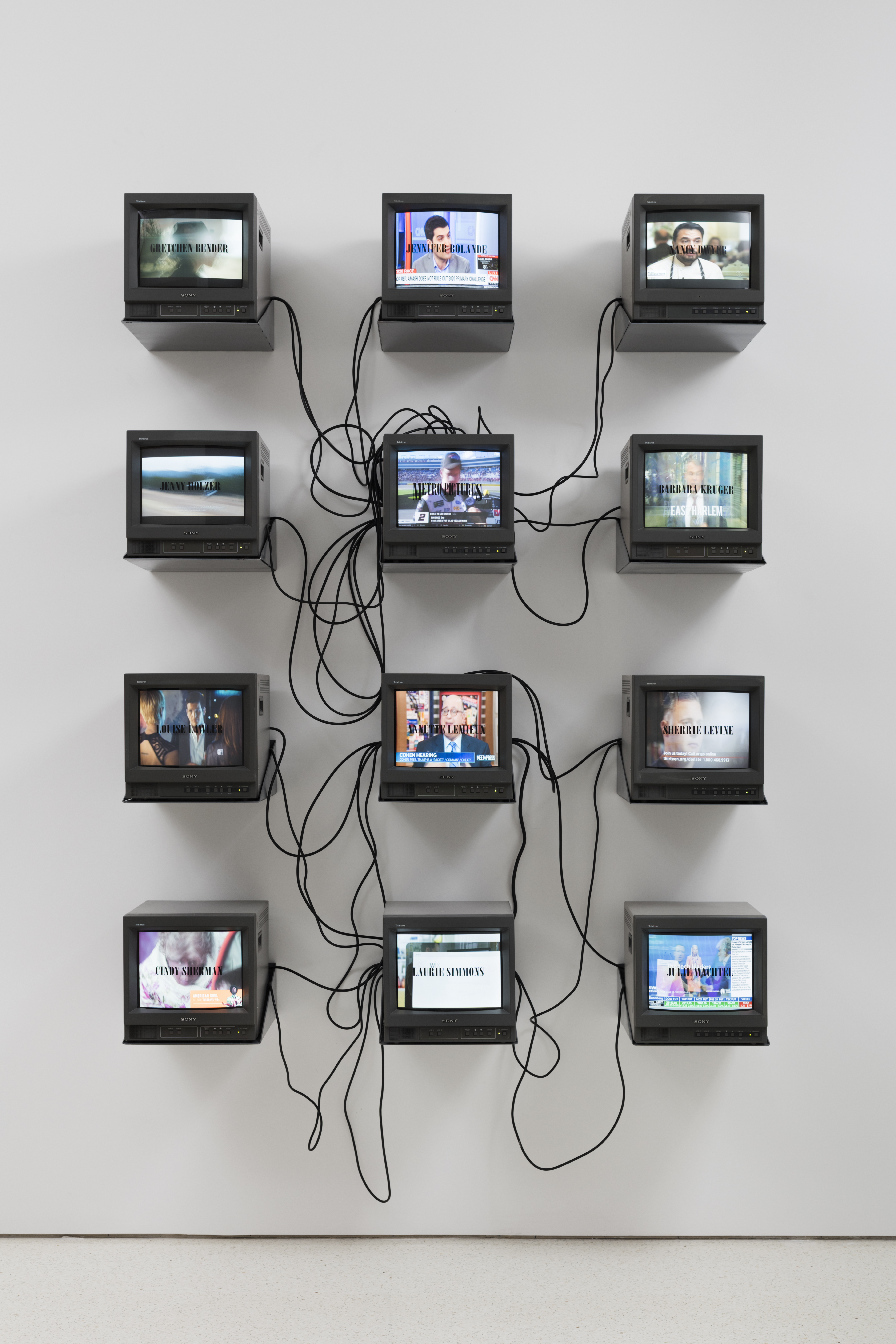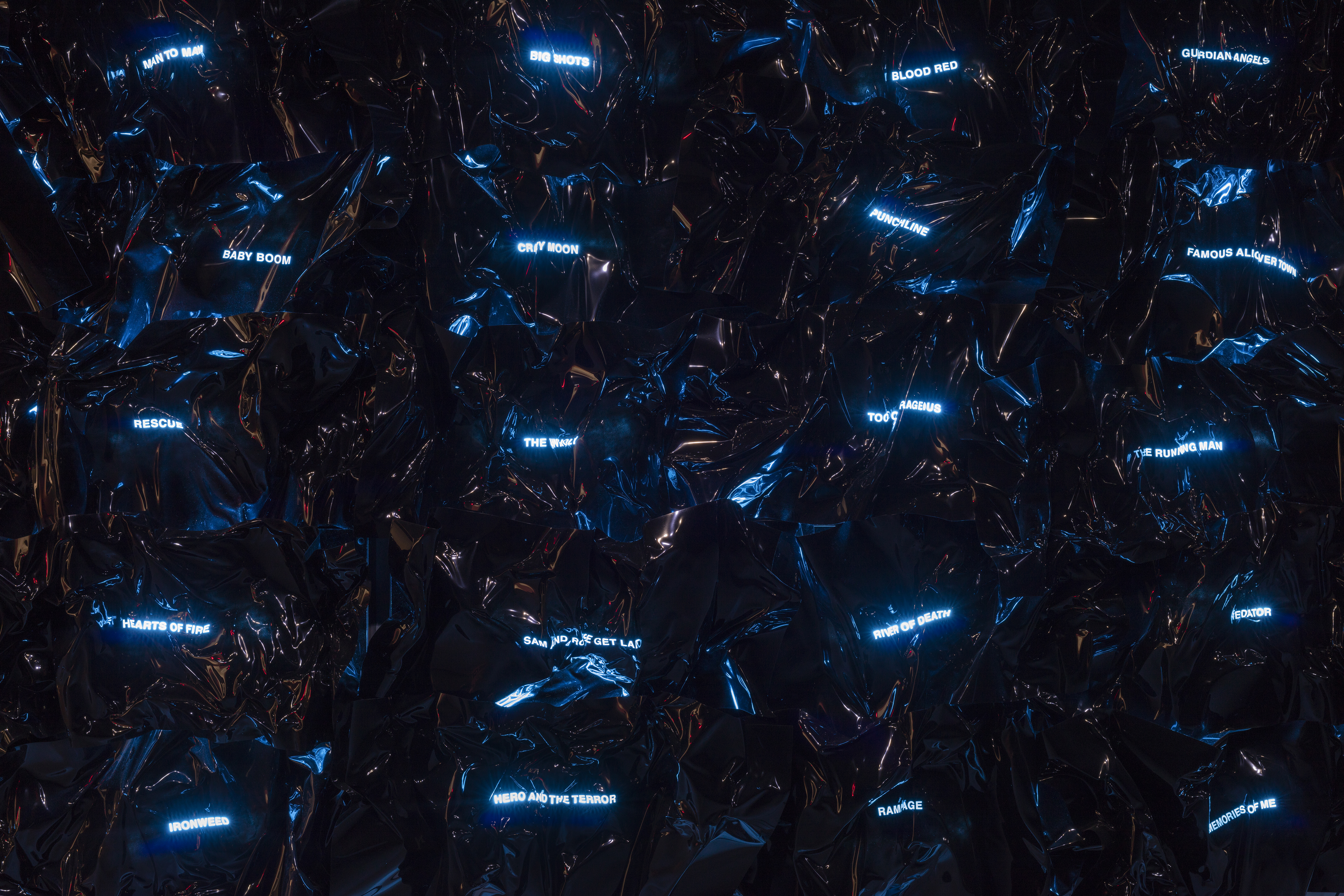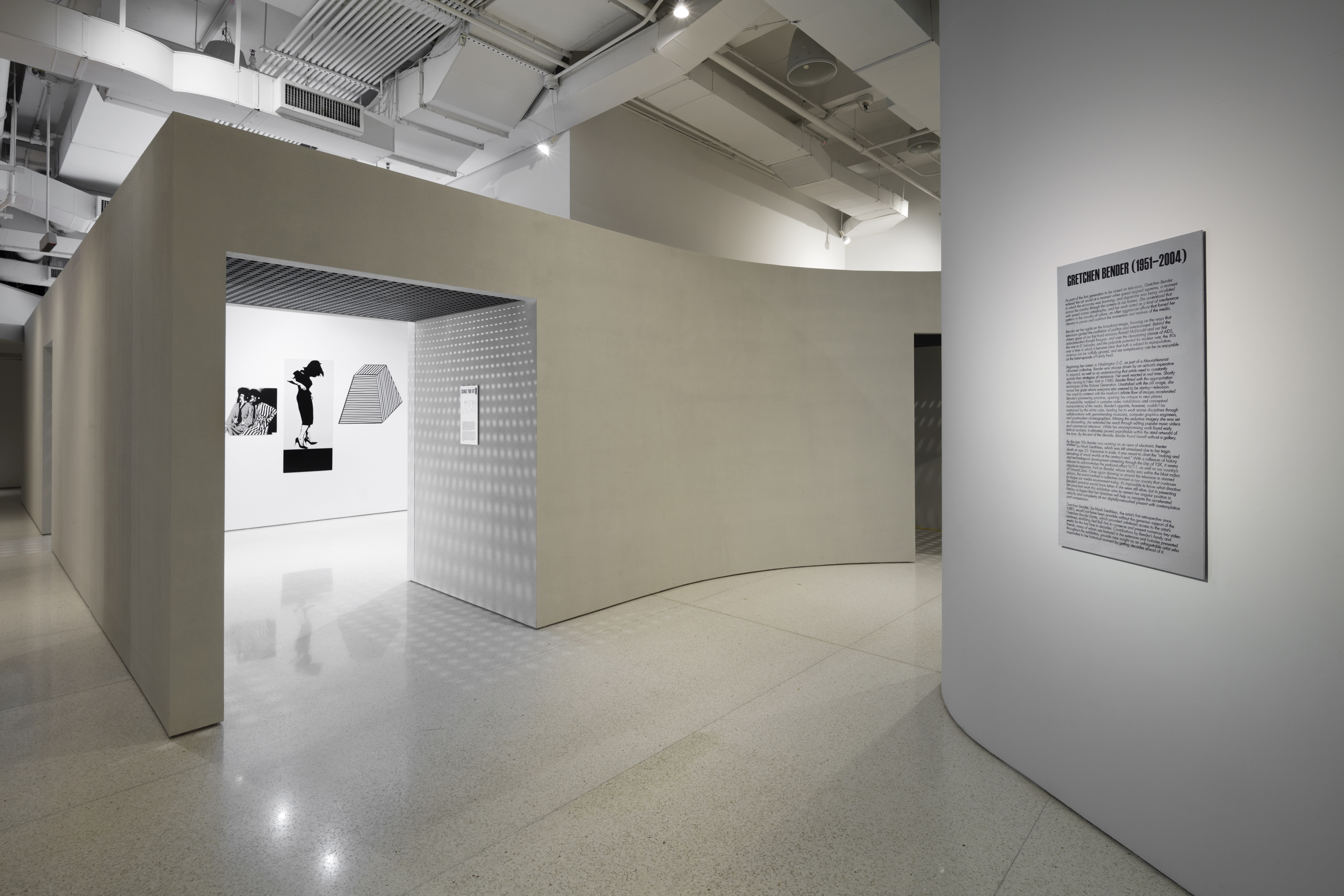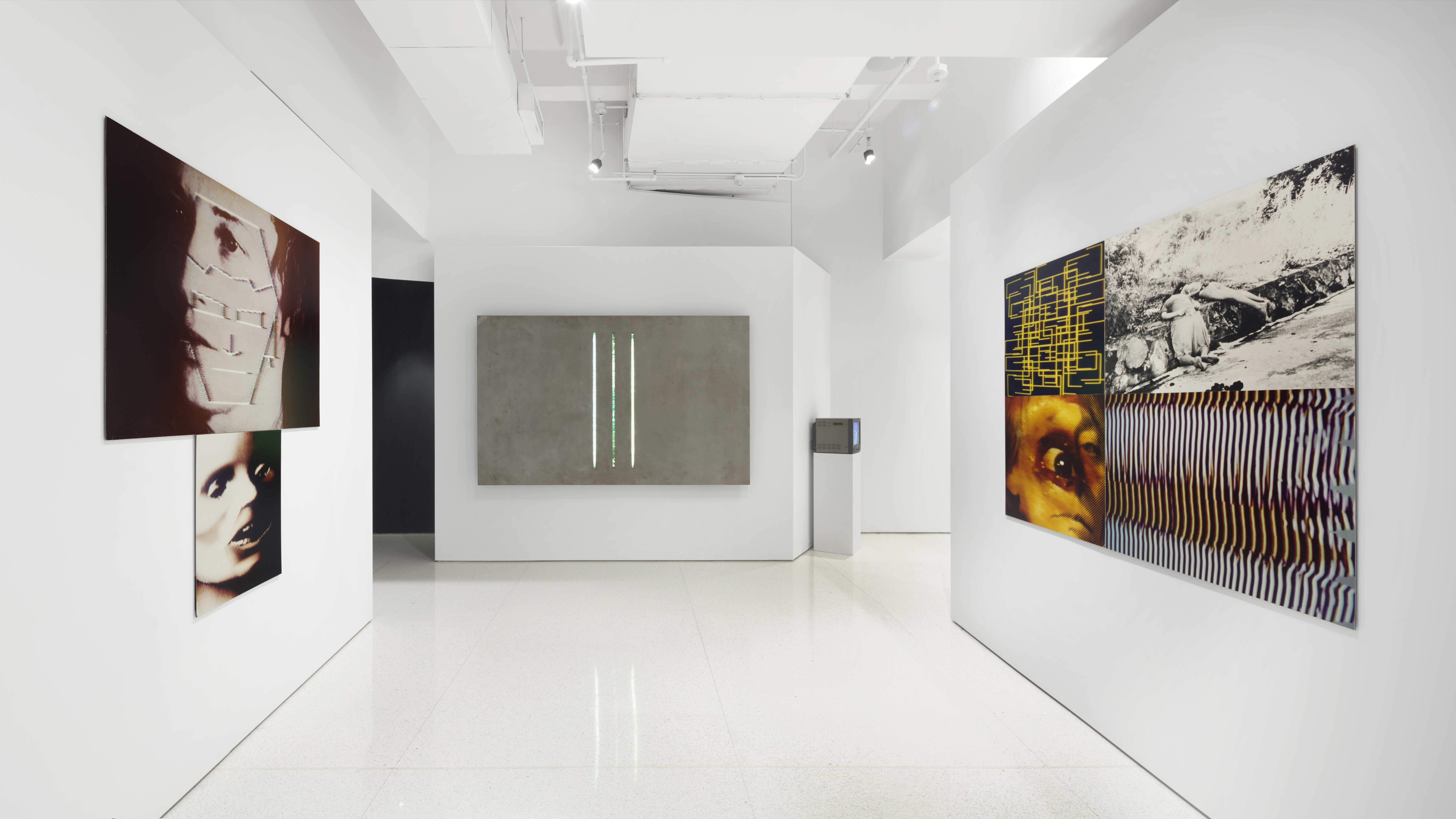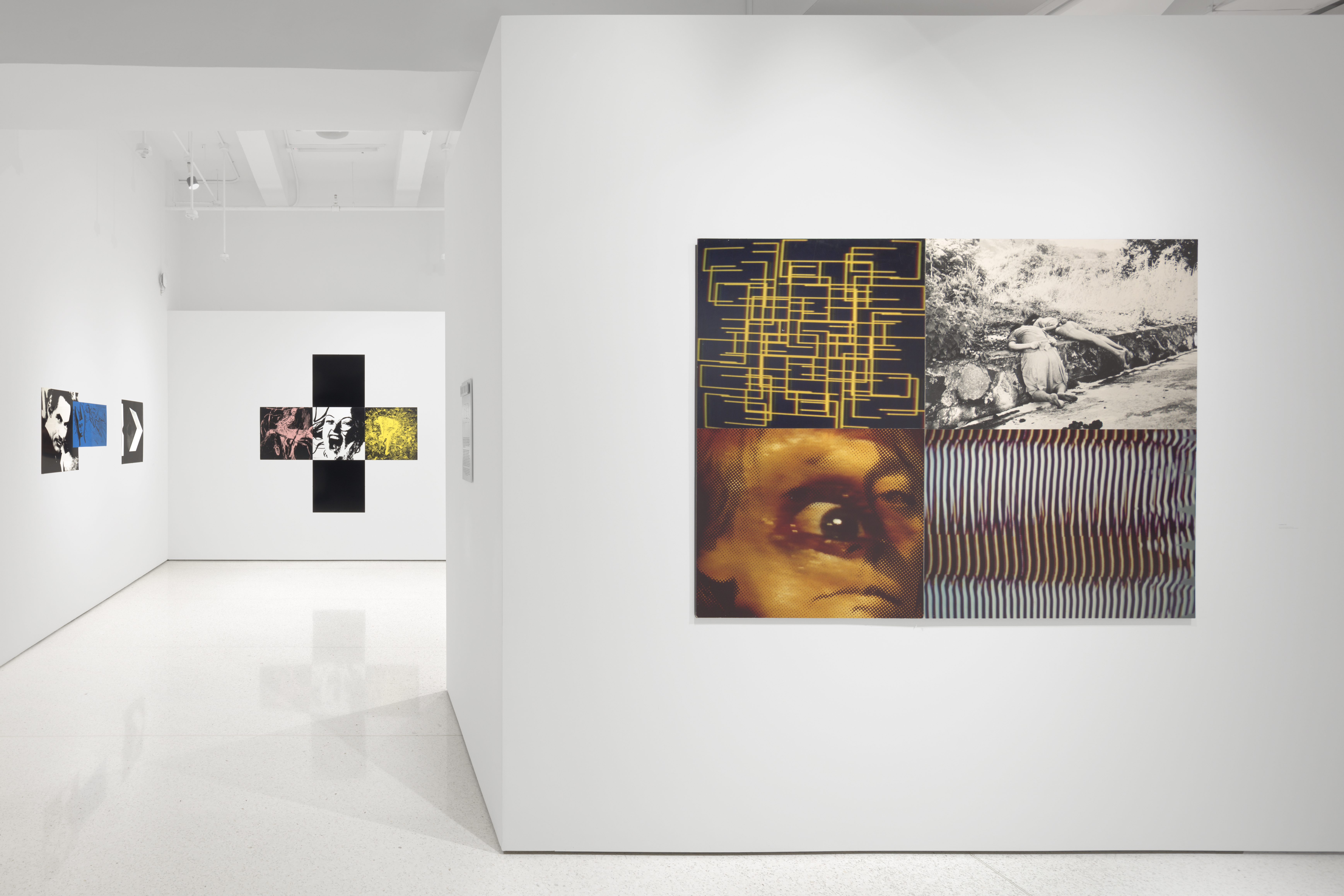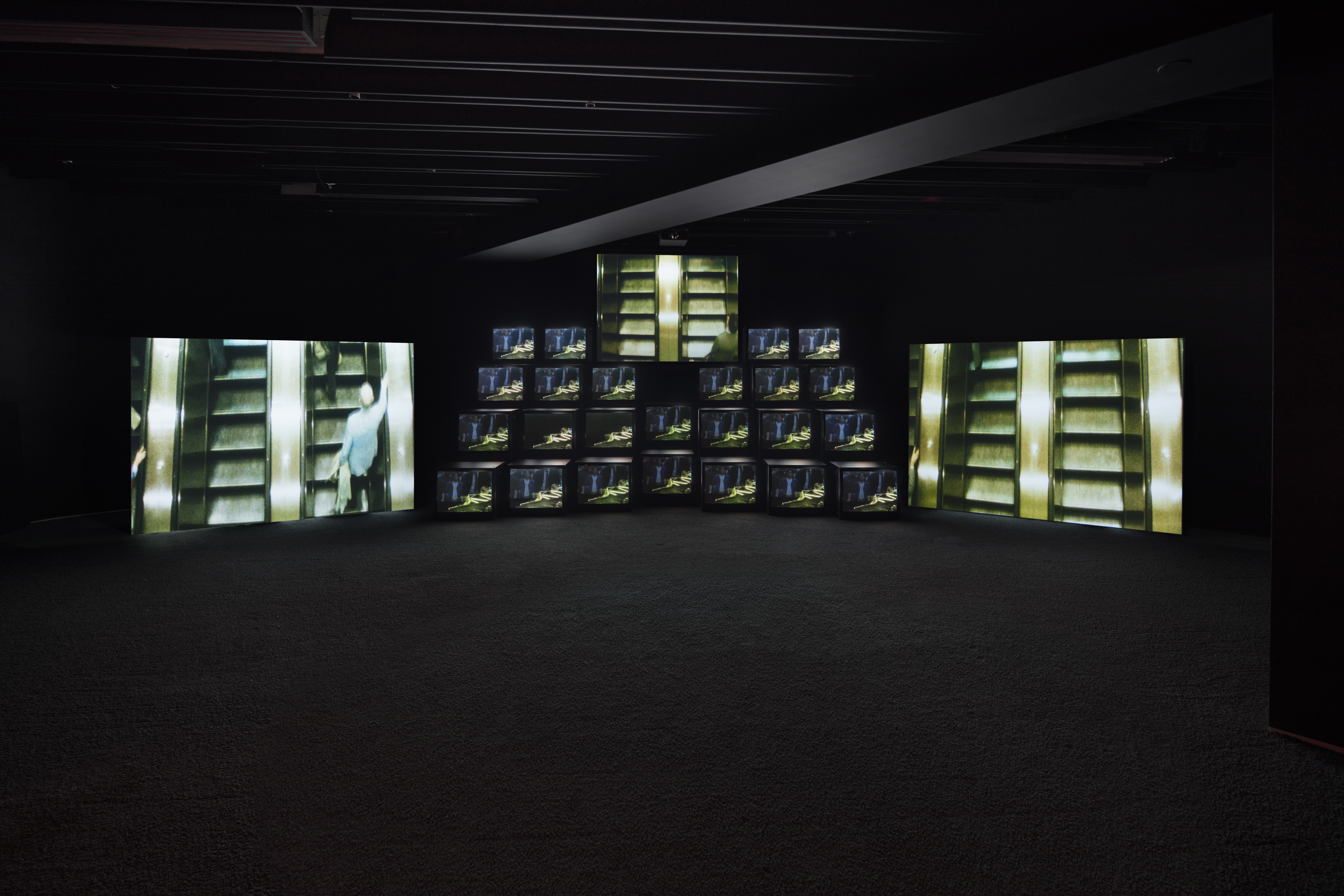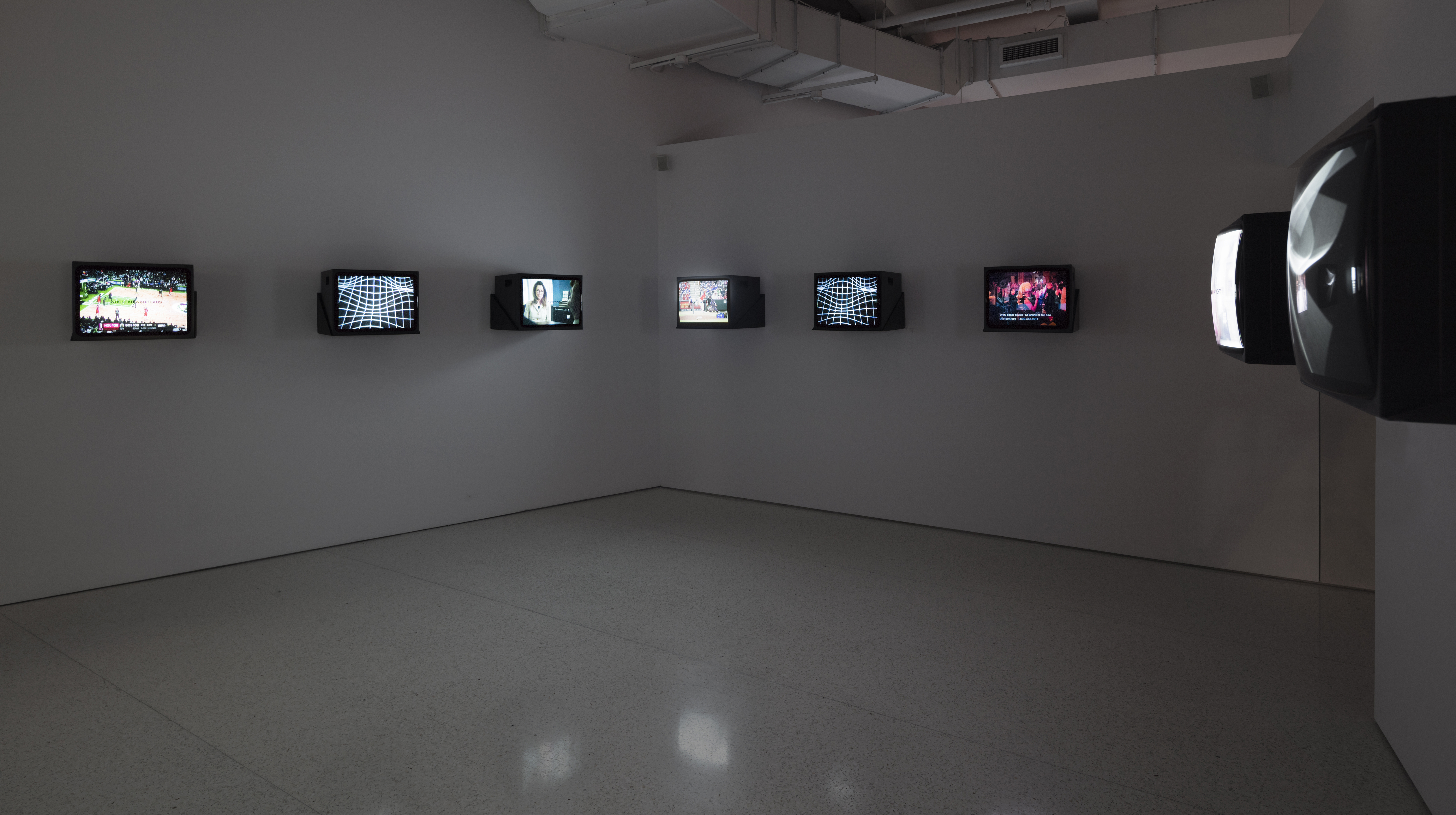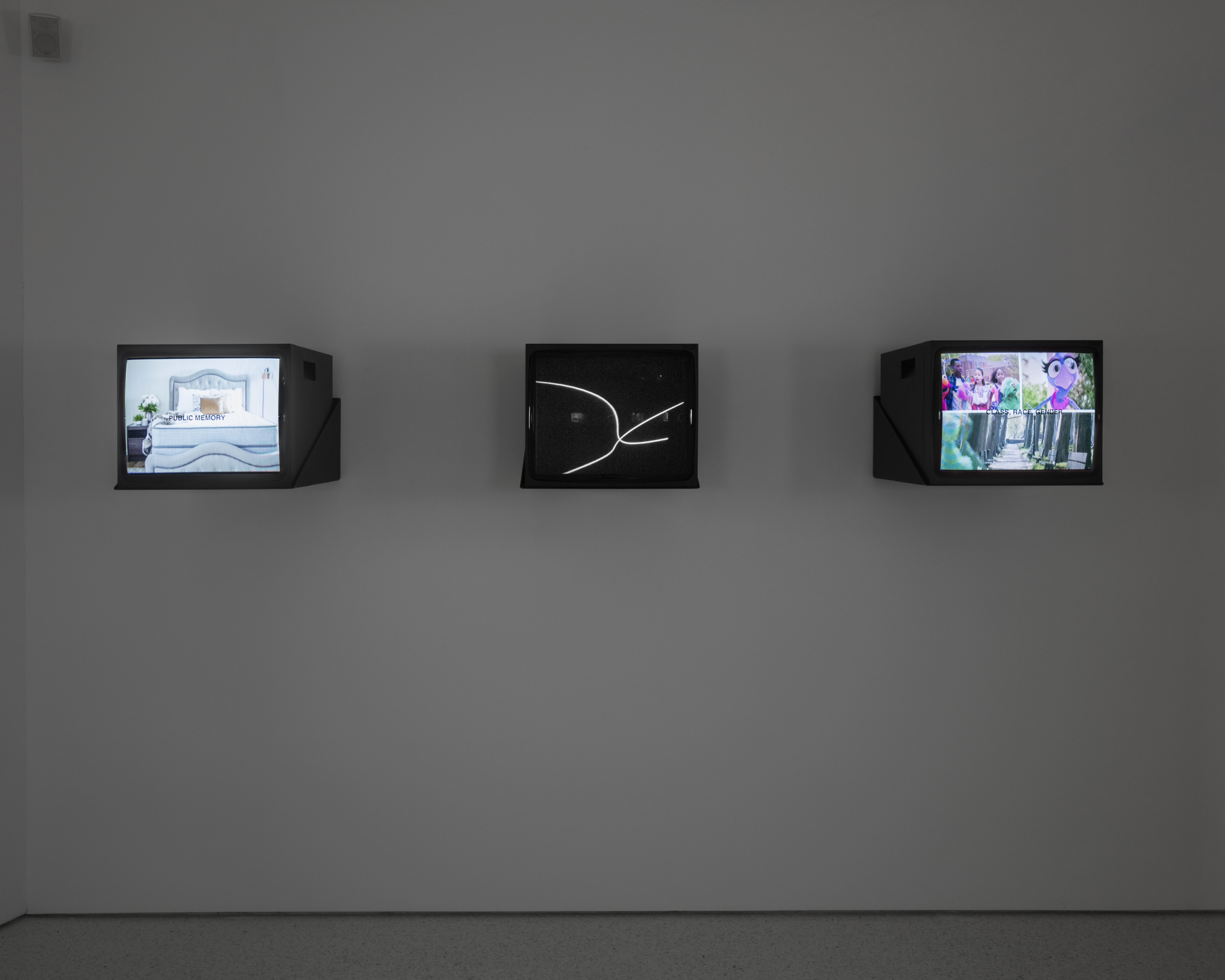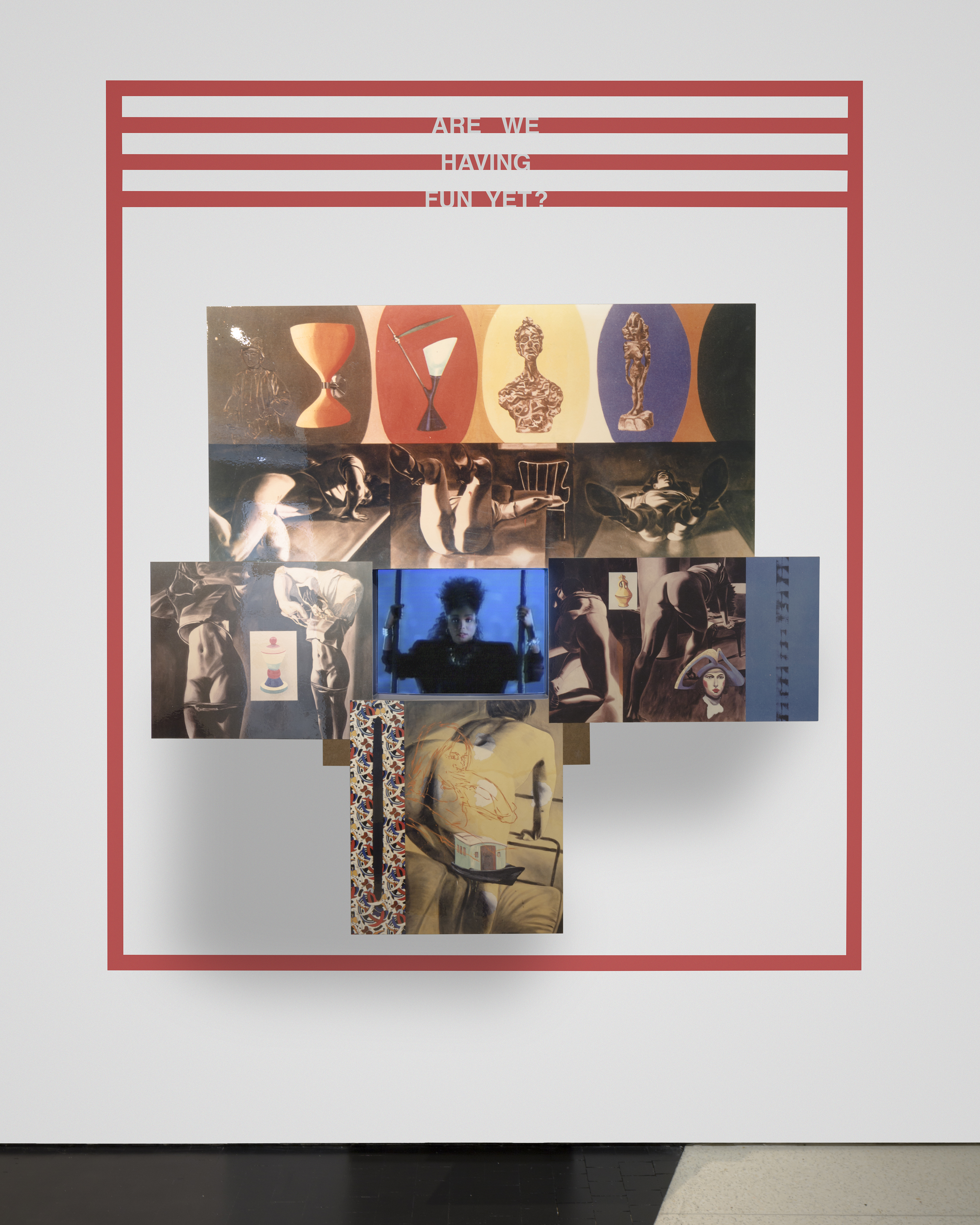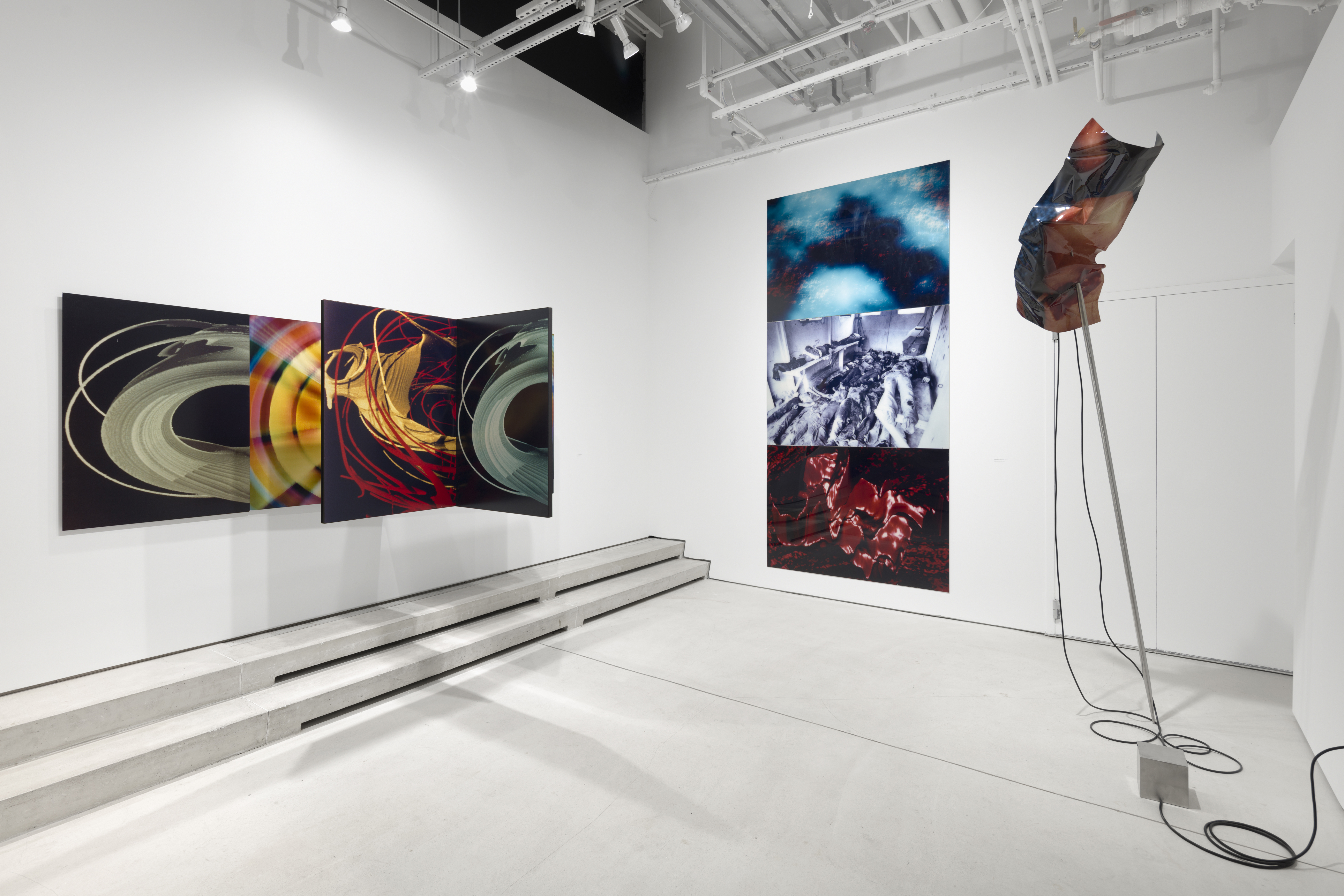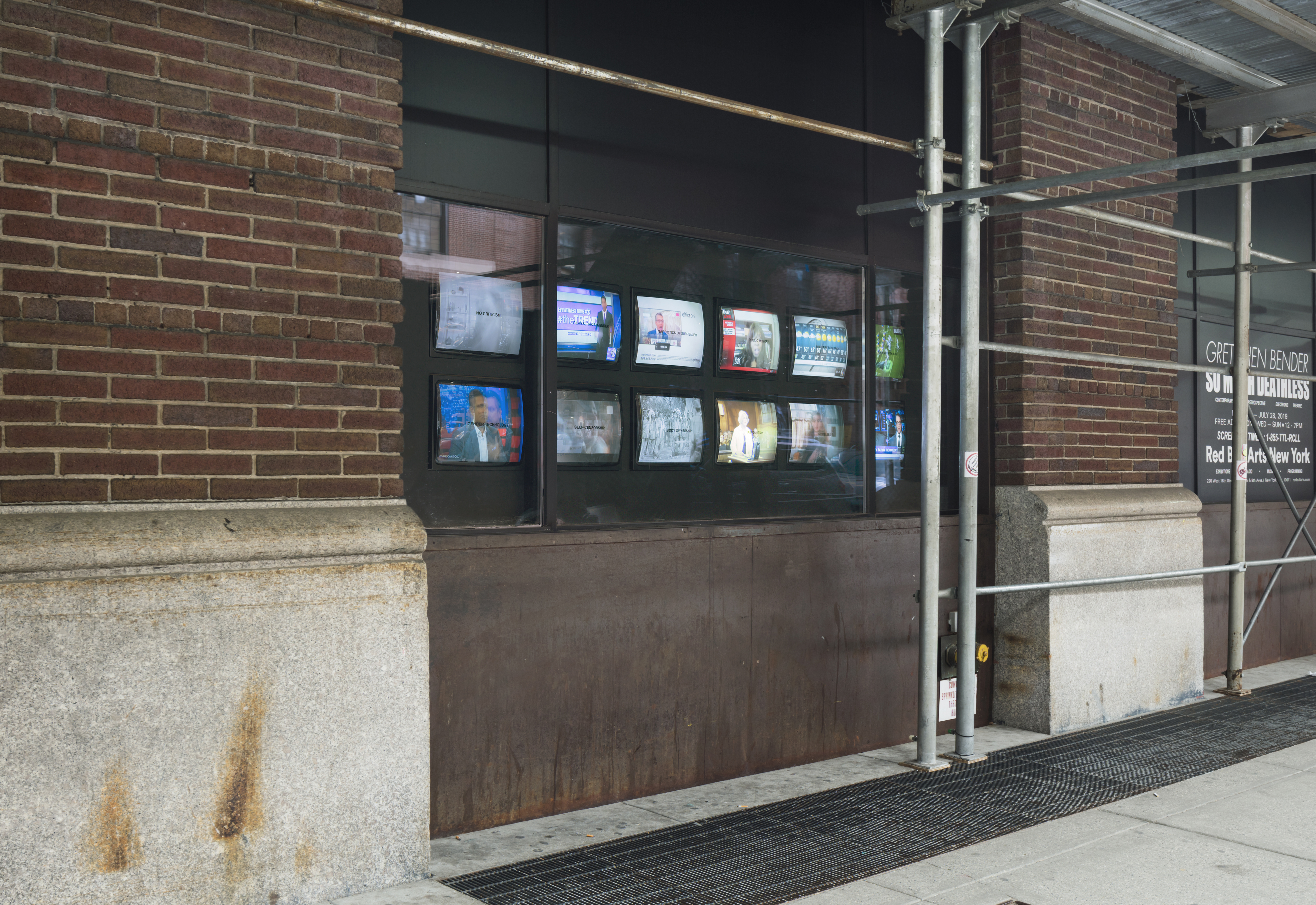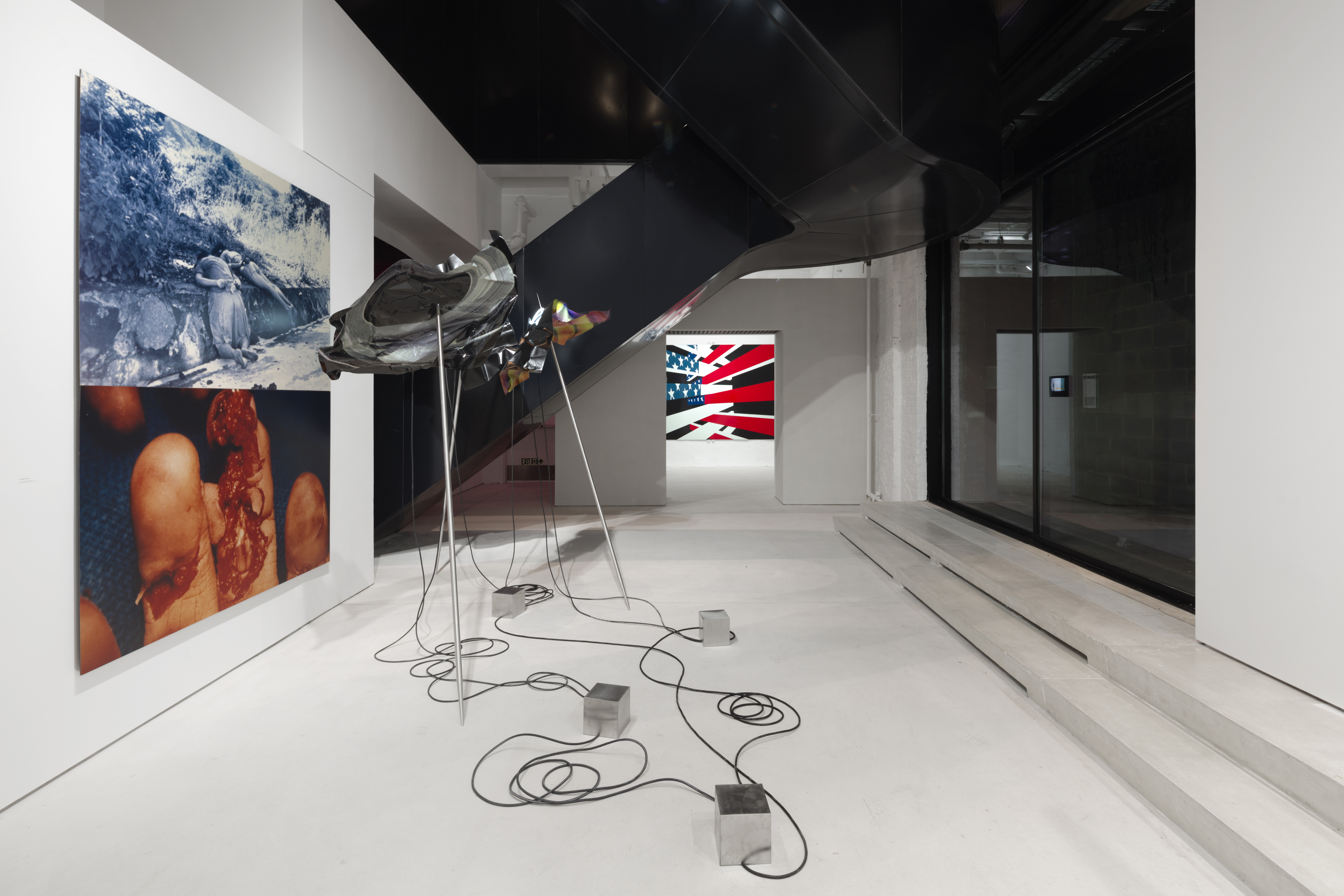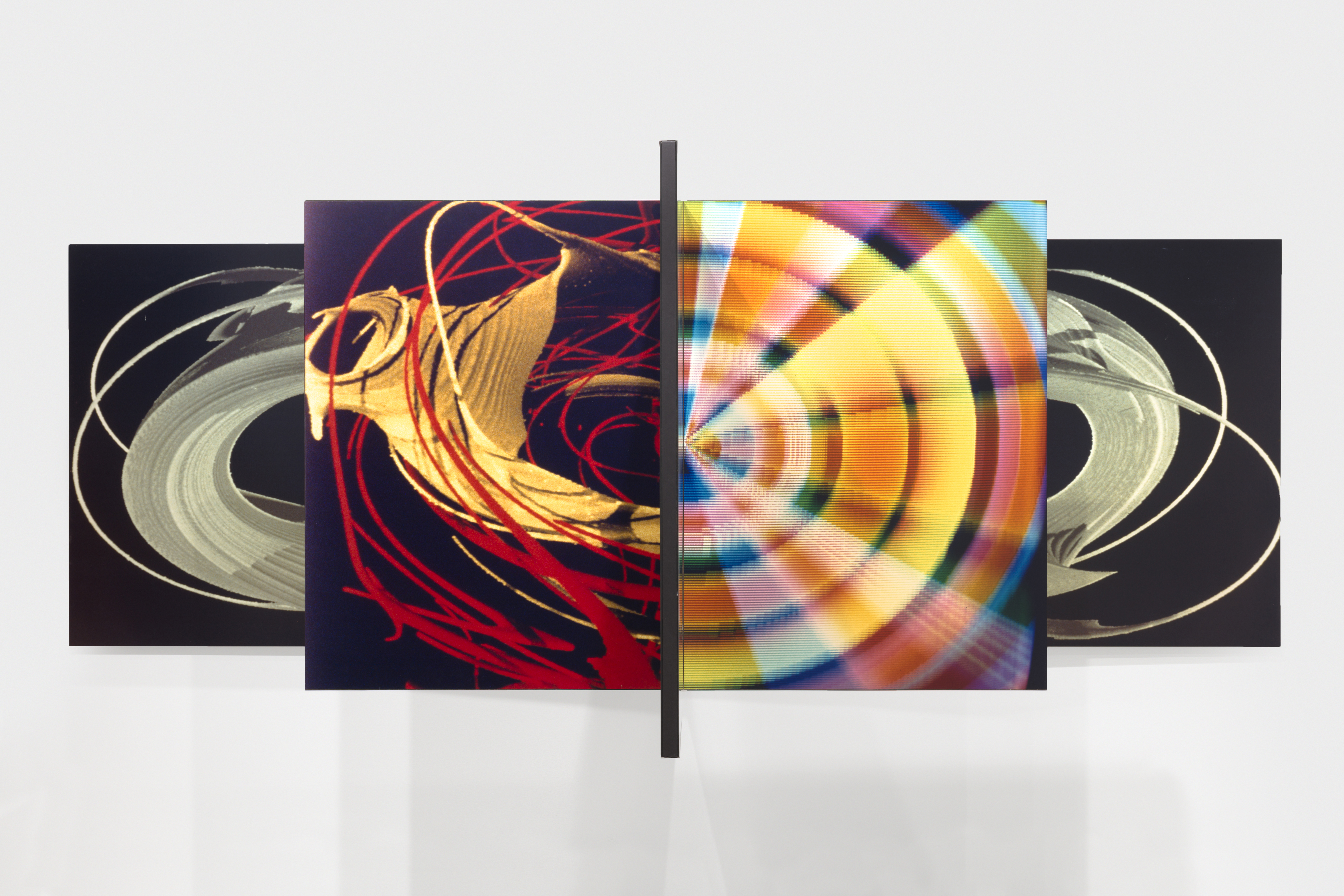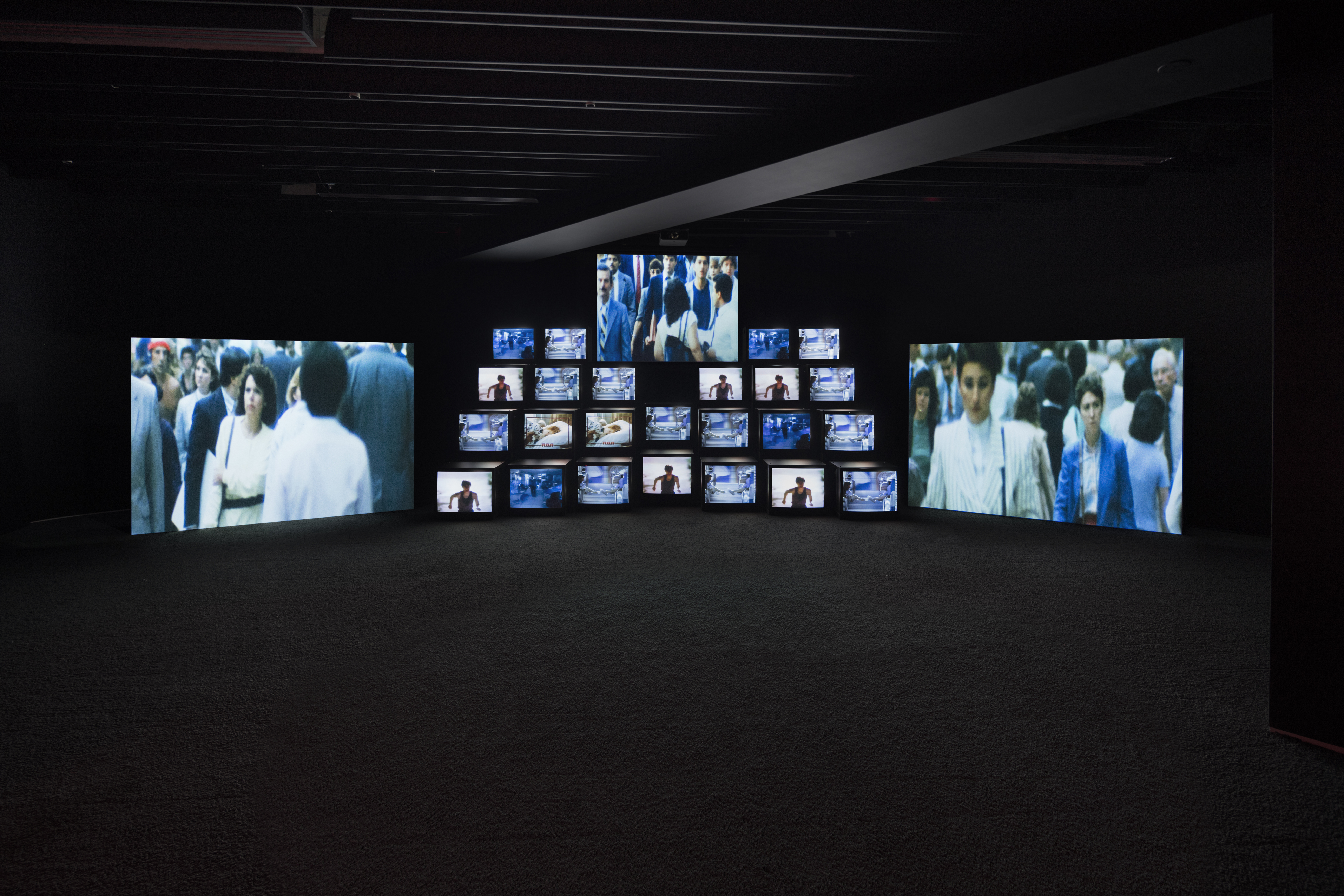
Gretchen Bender:
So Much Deathless
As part of the first generation to be raised on television, Gretchen Bender entered the art world at a moment when speed reigned supreme, a moment in which the economy was booming and dopamine was being circulated across the country through the screens in our homes. She understood that with speed comes catastrophe, and her work acted as a kind of interference pattern in the circuitry of culture, an often aggressive affront that forced her viewers to pause and confront the momentum and motives of the media.
Bender set her sights on the broadcast image, focusing on the ways in which television ignited the conflation of politics and entertainment. Behind the cheery guise of our fast food emissary Ronald McDonald and our first actor-president Ronald Reagan, and over the devastating silence of AIDS, the war in El Salvador, and the palpable potential for nuclear war, the 80s was a time in which it became clear that truth is subject to manipulation, violence can be willfully ignored, and our complacency can be as enjoyable as the latest episode of Family Feud.
Beginning her career in Washington D.C. as part of a Marxist-feminist silkscreen collective, Bender was always driven by an activist’s imperative to respond, as well as an understanding that artists need to constantly update their strategies of resistance. Her work reacted in real time. Shortly after moving to New York in 1980, Bender flirted with the appropriation techniques of the Pictures Generation. Unsatisfied with the still image, she turned her gaze where everyone else seemed to bestaring–television. Her need to contend with the medium’s infinite flow of images accelerated Bender’s pioneering practice, opening her critique to new planes of possibility, realized in complex video installations and conceptual manipulations of the media. Bender’s appetite, however, couldn’t be contained by the white cube, leading her to work across disciplines through collaborations with genre-bending musicians, computer graphics engineers, and postmodern choreographers. Miming the seductive imagery she was set on dismantling, she extended her reach through editing popular music videos and commercial television. While her uncompromising work found early critical acclaim, it ultimately proved unprofitable within the staid art-world of the time. By the end of the decade, Bender found herself without a gallery.
By the late 90s Bender was working on an opus of electronic theater entitled So Much Deathless,which was left unrealized due to her tragic death at age 53. Expansive in scale, it was meant to chart the “making and unmaking of visual worlds at the century’s end.” With a millenium of history and technological development careening through the blip of Y2K, it seems relevant to acknowledge the profound effect 9/11, as well as our country’s impulsive response, had on Bender, whose studio was within the blast radius of Ground Zero. Once again drawing us around the television in stunned silence, the event marked a collective moment in our country that continues to shape our media environment today. It’s impossible to know what direction Bender’s practice would have taken if she were still alive, but in presenting her prescient work this exhibition aims to cement her singular position in history, in hopes that her directives will help us navigate the accelerated velocity and complexity of our digitally-networked present with contemplation and compassion.
Gretchen Bender: So Much Deathless, the artist’s first retrospective since 1991, would not have been possible without the generous support of the Gretchen Bender Estate, which provided unfettered access to the artist’s archives, enabling Red Bull Arts to conserve and present numerous key video works for the first time in decades. Contributions by Bender’s family and friends, many of whom are featured in the extensive oral histories presented throughout the exhibition, provide new insight on an unforgettable artist who responded to her historical moment by getting decades ahead of it.
![]()
Bender set her sights on the broadcast image, focusing on the ways in which television ignited the conflation of politics and entertainment. Behind the cheery guise of our fast food emissary Ronald McDonald and our first actor-president Ronald Reagan, and over the devastating silence of AIDS, the war in El Salvador, and the palpable potential for nuclear war, the 80s was a time in which it became clear that truth is subject to manipulation, violence can be willfully ignored, and our complacency can be as enjoyable as the latest episode of Family Feud.
Beginning her career in Washington D.C. as part of a Marxist-feminist silkscreen collective, Bender was always driven by an activist’s imperative to respond, as well as an understanding that artists need to constantly update their strategies of resistance. Her work reacted in real time. Shortly after moving to New York in 1980, Bender flirted with the appropriation techniques of the Pictures Generation. Unsatisfied with the still image, she turned her gaze where everyone else seemed to bestaring–television. Her need to contend with the medium’s infinite flow of images accelerated Bender’s pioneering practice, opening her critique to new planes of possibility, realized in complex video installations and conceptual manipulations of the media. Bender’s appetite, however, couldn’t be contained by the white cube, leading her to work across disciplines through collaborations with genre-bending musicians, computer graphics engineers, and postmodern choreographers. Miming the seductive imagery she was set on dismantling, she extended her reach through editing popular music videos and commercial television. While her uncompromising work found early critical acclaim, it ultimately proved unprofitable within the staid art-world of the time. By the end of the decade, Bender found herself without a gallery.
By the late 90s Bender was working on an opus of electronic theater entitled So Much Deathless,which was left unrealized due to her tragic death at age 53. Expansive in scale, it was meant to chart the “making and unmaking of visual worlds at the century’s end.” With a millenium of history and technological development careening through the blip of Y2K, it seems relevant to acknowledge the profound effect 9/11, as well as our country’s impulsive response, had on Bender, whose studio was within the blast radius of Ground Zero. Once again drawing us around the television in stunned silence, the event marked a collective moment in our country that continues to shape our media environment today. It’s impossible to know what direction Bender’s practice would have taken if she were still alive, but in presenting her prescient work this exhibition aims to cement her singular position in history, in hopes that her directives will help us navigate the accelerated velocity and complexity of our digitally-networked present with contemplation and compassion.
Gretchen Bender: So Much Deathless, the artist’s first retrospective since 1991, would not have been possible without the generous support of the Gretchen Bender Estate, which provided unfettered access to the artist’s archives, enabling Red Bull Arts to conserve and present numerous key video works for the first time in decades. Contributions by Bender’s family and friends, many of whom are featured in the extensive oral histories presented throughout the exhibition, provide new insight on an unforgettable artist who responded to her historical moment by getting decades ahead of it.
